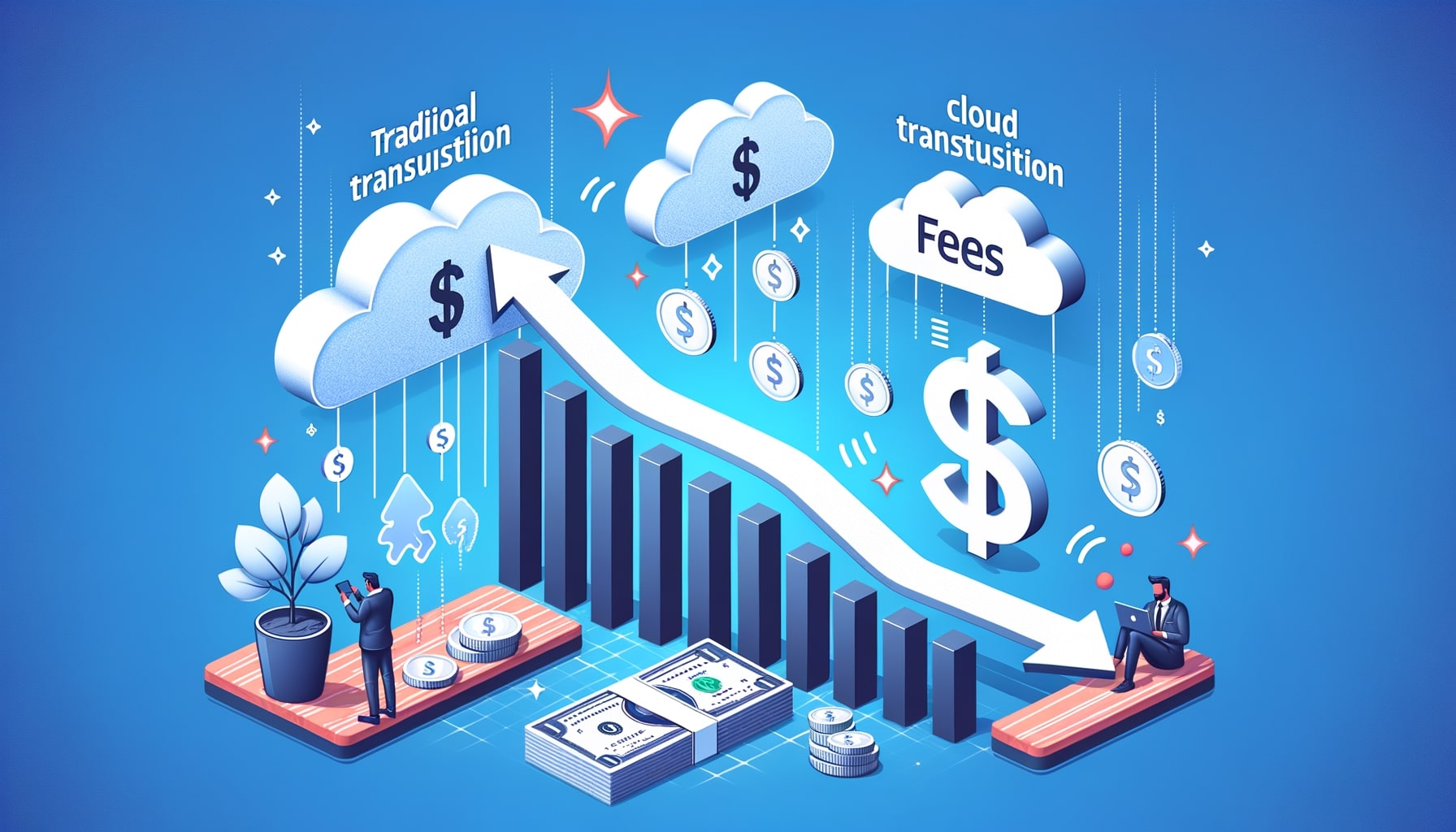Integrating Cloud Payments Using APIs: A Step-by-Step Guide
In today’s digital era, businesses are constantly seeking ways to streamline their operations and enhance customer experiences. One area that has seen significant advancements is payment processing. Traditional payment methods are being replaced by cloud payments, which offer numerous benefits such as increased security, scalability, and flexibility. To harness the power of cloud payments, businesses are turning to Application Programming Interfaces (APIs) for seamless integration.
In this comprehensive guide, we will explore the world of cloud payments and APIs, understand their benefits, and provide a step-by-step guide to integrating cloud payments using APIs.
Understanding the Benefits of Integrating Cloud Payments
- Enhanced Security: Cloud payments offer robust security measures, including encryption and tokenization, to protect sensitive customer data. By integrating cloud payments using APIs, businesses can ensure that payment information is securely transmitted and stored, reducing the risk of data breaches.
- Scalability and Flexibility: Cloud payment solutions can easily scale to accommodate growing business needs. APIs enable businesses to integrate payment functionality into their existing systems, allowing for seamless expansion without disrupting operations.
- Improved Efficiency: Cloud payments eliminate the need for manual data entry and reconciliation, reducing human errors and saving time. APIs enable businesses to automate payment processes, resulting in increased efficiency and productivity.
- Cost Savings: Cloud payment solutions eliminate the need for expensive hardware and maintenance costs associated with traditional payment systems. By integrating cloud payments using APIs, businesses can reduce infrastructure costs and allocate resources more effectively.
- Enhanced Customer Experience: Cloud payments offer a seamless and convenient payment experience for customers. APIs enable businesses to integrate payment functionality into their websites or mobile applications, providing a frictionless checkout process and improving customer satisfaction.
Exploring the Role of APIs in Cloud Payment Integration
APIs play a crucial role in integrating cloud payments into existing business systems. They act as a bridge between different software applications, allowing them to communicate and share data seamlessly. In the context of cloud payment integration, APIs enable businesses to connect their payment systems with external payment service providers, facilitating secure and real-time payment processing. APIs provide the following key functionalities:
- Payment Authorization: APIs enable businesses to authorize payments by securely transmitting payment details to the payment service provider. This ensures that transactions are validated and approved before funds are transferred.
- Payment Capture: APIs facilitate the capture of payment details, including card information and transaction amounts. This information is securely transmitted to the payment service provider for processing.
- Payment Status Updates: APIs allow businesses to retrieve real-time updates on payment statuses, such as successful transactions or failed payments. This enables businesses to provide timely notifications to customers and take appropriate actions.
- Refunds and Disputes: APIs enable businesses to initiate refunds or handle payment disputes by communicating with the payment service provider. This ensures that businesses can efficiently manage customer requests and maintain customer satisfaction.
Choosing the Right Cloud Payment Provider for Your Business
When integrating cloud payments using APIs, selecting the right cloud payment provider is crucial. Here are some factors to consider when choosing a cloud payment provider for your business:
- Security: Ensure that the cloud payment provider has robust security measures in place to protect sensitive customer data. Look for certifications such as Payment Card Industry Data Security Standard (PCI DSS) compliance.
- Integration Options: Evaluate the APIs provided by the cloud payment provider. Look for comprehensive documentation, developer support, and compatibility with your existing systems.
- Payment Methods: Consider the payment methods supported by the cloud payment provider. Ensure that they align with your business requirements and cater to your target customer base.
- Pricing Structure: Understand the pricing structure of the cloud payment provider, including transaction fees, monthly charges, and any additional costs. Compare pricing models to ensure they align with your budget and expected transaction volumes.
- Reputation and Reliability: Research the reputation and reliability of the cloud payment provider. Look for customer reviews, testimonials, and case studies to gauge their track record and customer satisfaction levels.
What are APIs and How Do They Facilitate Cloud Payments Integration?
APIs, or Application Programming Interfaces, play a crucial role in facilitating the integration of cloud payments into your business. An API acts as a bridge between different software applications, allowing them to communicate and share data seamlessly. In the context of cloud payments, APIs enable businesses to connect their payment systems with cloud payment providers, such as PayPal, Stripe, or Braintree.
Step 1: Choosing the Right Cloud Payment Provider for Your Business
The first step in integrating cloud payments is selecting the right payment provider for your business. Consider factors such as transaction fees, supported payment methods, international capabilities, and security features. It is essential to choose a provider that aligns with your business needs and goals.
Step 2: Setting Up Your Cloud Payment Account and API Access
Once you have chosen a cloud payment provider, the next step is to set up your account and obtain API access. This typically involves creating an account on the provider’s website, providing necessary business information, and agreeing to the terms and conditions. Afterward, you will receive API credentials, including an API key and secret, which will be used to authenticate your requests.
Step 3: Configuring API Settings and Security Measures
Configuring API settings and implementing security measures is crucial to ensure the integrity and confidentiality of your payment transactions. Most cloud payment providers offer a range of security features, such as tokenization, encryption, and fraud detection. It is essential to enable these features and configure them according to your business requirements.
Step 4: Implementing API Calls for Payment Processing
Once your API settings and security measures are in place, you can start implementing API calls for payment processing. API calls are requests made to the cloud payment provider’s server to perform specific actions, such as creating a payment, processing a transaction, or retrieving payment details. These calls are typically made using HTTP protocols and can be integrated into your website or mobile application.
Step 5: Testing and Troubleshooting Your Cloud Payment Integration
After implementing API calls, it is crucial to thoroughly test your cloud payment integration to ensure its functionality and reliability. This involves conducting various test scenarios, such as successful payments, failed payments, and refunds. Additionally, it is essential to monitor error logs and troubleshoot any issues that may arise during the testing phase.
Step 6: Customizing the User Experience with Cloud Payment APIs
Cloud payment APIs offer a range of customization options to enhance the user experience. You can customize the payment form’s design, layout, and branding to match your website or application. Additionally, you can implement features such as one-click payments, recurring billing, and saved payment methods to simplify the checkout process for your customers.
Step 7: Monitoring and Analyzing Cloud Payment Transactions
Monitoring and analyzing cloud payment transactions is crucial for gaining insights into your business’s financial performance. Most cloud payment providers offer reporting and analytics tools that allow you to track transaction volumes, revenue, and customer behavior. By analyzing this data, you can identify trends, optimize your pricing strategy, and make informed business decisions.
Common Challenges and Solutions in Cloud Payment Integration
While integrating cloud payments using APIs offers numerous benefits, businesses may encounter certain challenges during the process. Here are some common challenges and their solutions:
- Compatibility Issues: Incompatibility between existing systems and the cloud payment provider’s APIs can hinder integration. To overcome this, ensure that your systems are updated and compatible with the API requirements. If necessary, consider using middleware or integration platforms to bridge the gap.
- Data Security Concerns: Businesses may have concerns about the security of customer data when integrating cloud payments. To address this, choose a cloud payment provider with robust security measures and ensure that your integration follows best practices for data encryption and protection.
- Technical Expertise: Integrating cloud payments using APIs requires technical expertise. If your team lacks the necessary skills, consider partnering with a development agency or hiring experienced developers to assist with the integration.
- Compliance Requirements: Depending on your industry and location, you may have specific compliance requirements to meet when processing payments. Ensure that your chosen cloud payment provider complies with these requirements and provides the necessary documentation for audits.
Enhancing Security and Compliance in Cloud Payment Integration
Security and compliance are paramount when integrating cloud payments using APIs. Here are some best practices to enhance security and compliance:
- Encryption: Implement end-to-end encryption to protect sensitive payment data during transmission and storage. Use industry-standard encryption algorithms and protocols to ensure data confidentiality.
- Tokenization: Implement tokenization to replace sensitive payment data with unique tokens. This reduces the risk of data breaches as tokens cannot be reverse-engineered to obtain the original payment information.
- Two-Factor Authentication: Implement two-factor authentication for accessing payment APIs and sensitive data. This adds an extra layer of security by requiring users to provide a second form of authentication, such as a one-time password or biometric verification.
- Regular Security Audits: Conduct regular security audits to identify vulnerabilities and ensure compliance with security standards. Engage third-party security experts to perform penetration testing and vulnerability assessments.
- Compliance Documentation: Maintain proper documentation of your security measures and compliance efforts. This includes policies, procedures, and evidence of compliance with industry standards such as PCI DSS.
Optimizing User Experience in Cloud Payment Integration
To provide a seamless user experience when integrating cloud payments using APIs, consider the following best practices:
- Simplified Checkout Process: Streamline the checkout process by minimizing the number of steps required to complete a payment. Use pre-filled forms and auto-detection of payment methods to reduce user effort.
- Mobile Optimization: Ensure that your payment integration is optimized for mobile devices. Implement responsive design and mobile-friendly interfaces to cater to the increasing number of users accessing your website or application via mobile devices.
- Guest Checkout Option: Provide a guest checkout option for users who do not wish to create an account. This reduces friction and allows users to complete their payment quickly.
- Error Handling and Messaging: Clearly communicate any errors or issues that occur during the payment process. Use user-friendly error messages and provide guidance on how to resolve the issue.
- Transparent Pricing: Clearly display pricing information, including any additional fees or charges, before users initiate the payment process. This helps build trust and avoids any surprises for the user.
Frequently Asked Questions (FAQs) about Cloud Payments and APIs
Q.1: What are cloud payments?
Answer: Cloud payments refer to the process of accepting and processing payments using cloud-based infrastructure and services. This eliminates the need for traditional on-premises payment systems and offers benefits such as enhanced security, scalability, and flexibility.
Q.2: What is an API?
Answer: An API, or Application Programming Interface, is a set of rules and protocols that allows different software applications to communicate and share data. In the context of cloud payment integration, APIs enable businesses to connect their systems with external payment service providers for seamless payment processing.
Q.3: How do APIs enhance security in cloud payment integration?
Answer: APIs enhance security in cloud payment integration by facilitating secure transmission and storage of payment data. They enable businesses to implement encryption, tokenization, and two-factor authentication to protect sensitive customer information.
Q.4: How can businesses choose the right cloud payment provider?
Answer: When choosing a cloud payment provider, businesses should consider factors such as security measures, integration options, supported payment methods, pricing structure, and the provider’s reputation and reliability.
Q.5: What are some common challenges in cloud payment integration?
Answer: Common challenges in cloud payment integration include compatibility issues, data security concerns, technical expertise requirements, and compliance requirements. These challenges can be overcome by ensuring system compatibility, choosing a secure provider, seeking technical assistance if needed, and maintaining compliance documentation.
Conclusion
Integrating cloud payments using APIs can revolutionize your business’s payment processing capabilities. By following the step-by-step guide outlined in this article, you can seamlessly integrate cloud payments into your operations, enhance customer experiences, and drive business growth. Remember to choose the right cloud payment provider, configure API settings and security measures, implement API calls, test and troubleshoot your integration, customize the user experience, and monitor and analyze your payment transactions. With the right approach and careful implementation, cloud payments can become a game-changer for your business.










